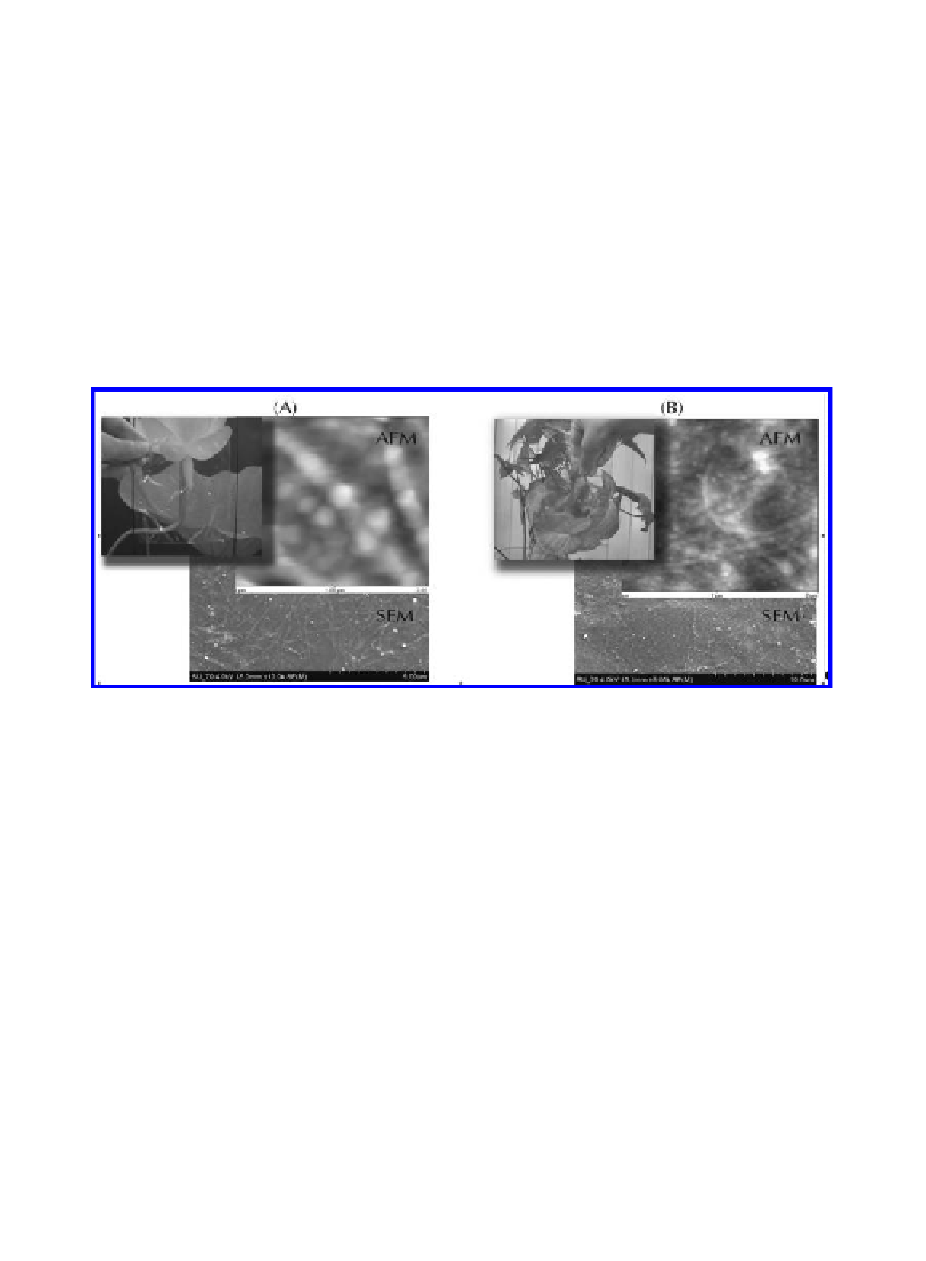Biomedical Engineering Reference
In-Depth Information
published. One practical application of chitosan-cellulose mixtures is their processing
into films, having high strength parameters and also good biocompatibility, biodegrad-
ability and hydrophilicity. More recently, the incorporation of micro and nanofibers
cellulose into several polymeric matrices, gave materials with superior mechanical,
thermal and barrier properties and transparency when compared with the conventional
fibers. Some studies have been published dealing with the preparation and character-
ization of NFC or BC based-nanocomposites with chitosan (Ciechanska, 2004; Dubey,
2005; Fernandes, 2009, 2010; Hosokawa, 1990, 1991; Nordqvist, 2007).
Transparent films have been obtained from mixtures of chitosan and both BC and
NFC nanofibers (Fernandes, 2009, 2010). The chitosan solutions were shown to be an
efficient media to prepare stable suspensions of NFC or BC, and to produce transpar-
ent films with a very homogeneous distribution of BC and NFC (Figure 4).
Figure 4.
Images and AFM/SEM micrographs of transparent nanocomposite films of chitosan with
BC (A) and NFC (B).
Chitosan- and water-soluble chitosan-cellulose nanofiber nanocomposite films
were prepared by a simple and green procedure based on casting water (or 1% acetic
solutions) suspensions of chitosan with different contents of NFC (up to 60%), and BC
(up to 40%). The transparency of the films obtained indicated that the dispersion of
the NFC and BC into the chitosan matrices was quite good. The nanocomposite films
prepared with BC showed higher transmittance than the corresponding films prepared
with NFC, because of the higher purity of BC.
The ensuing materials were in general very homogenous and presented better
thermo-mechanical and mechanical properties than the corresponding unfilled chito-
san films. With the NFC and BC addition to the chitosan's matrices, tensile strength
and Youngs modulus were completely dominated by the NFC and BC network. The
superior mechanical properties of all nanocomposite films, compared with those of
the unfilled CH films, confirmed the good interfacial adhesion and the strong interac-
tions between the two components. These results can be explained by the inherent
morphology of BC with its nanofibrillar network, the high aspect ratio of NFC and
the similar structures of the two polysaccharides. The nanocomposite films presented

Search WWH ::

Custom Search